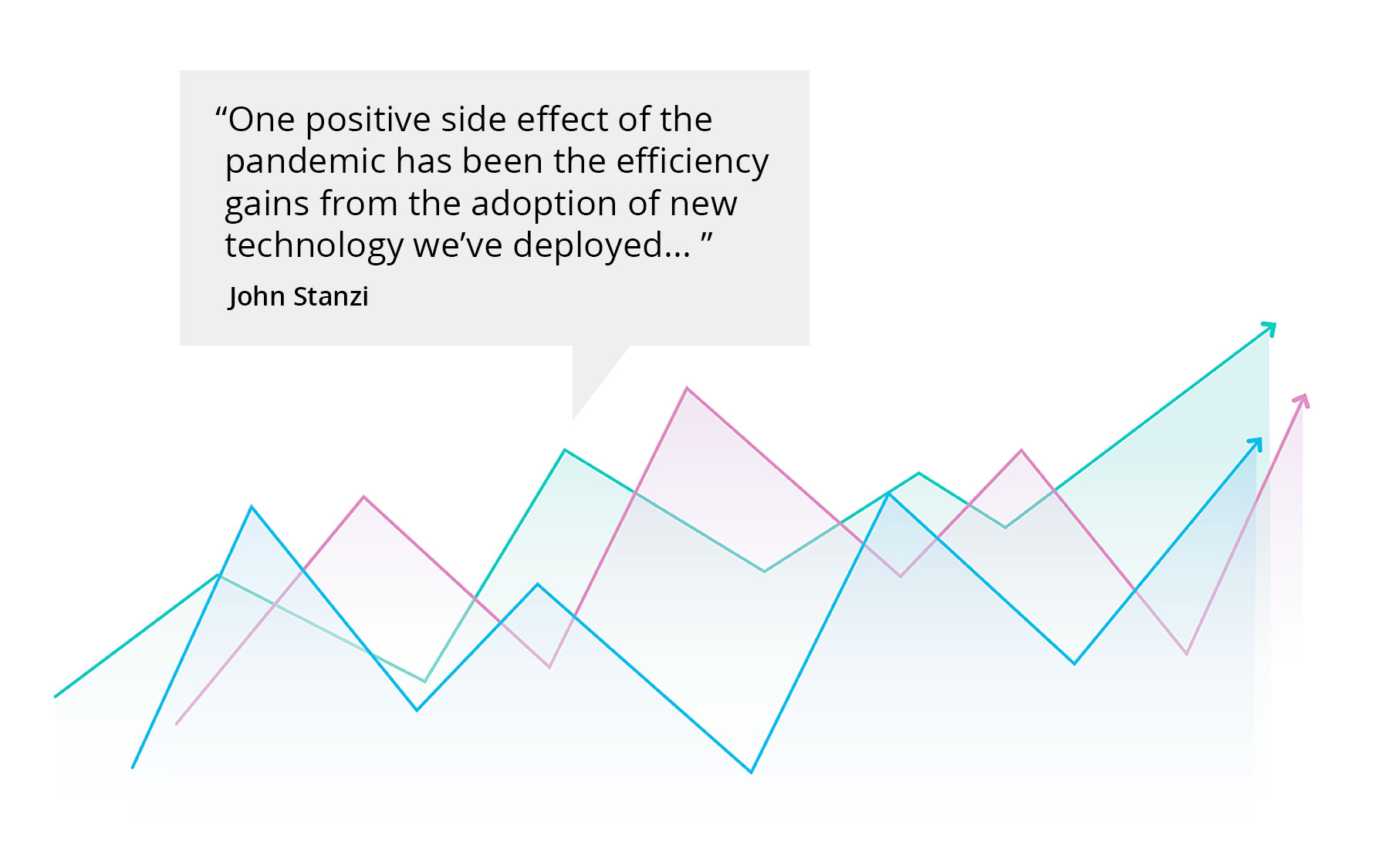As part of Sedgwick’s planned shift of key leadership positions in late 2020, Jim Ryan stepped into the new role of chief operating officer for the Americas. He named John Stanzi as his successor, who took over executive leadership responsibility for casualty operations. We spoke with John about the broad reach of his new role, and his vision for the future of casualty both in and outside of Sedgwick.
edge:
Hi John! While the title might be relatively new, you’re certainly not new to Sedgwick, or to the industry. Fill us in briefly on how you came to assume the role of president of the casualty business unit.
John:
First of all, let me just say how proud I am to be part of the casualty team here at Sedgwick. As of today we’re more than 6,600 colleagues strong, each of whom is working on behalf of our clients every day — and, for many of us, we’ve been doing it for more than a year in a new, at-home environment. I’ve been so impressed by the unwavering commitment of our colleagues to continue delivering at the highest levels.
Like many in our industry, I didn’t grow up planning on a career in insurance, let alone claims. I entered the insurance sector about 15 years ago, after working at Merrill Lynch, where I had to get up to speed quickly on the companies that came across my desk for investment. That’s how I first got acquainted with York, and I joined the team there in 2008 as the head of mergers and acquisitions (Sedgwick acquired York in late 2019.) I was really drawn to the idea that we are a people-first business, but also a data-driven one. The best of both worlds to make a career and an impact on peoples’ lives from my perspective. We are often helping people when they need it most.
After York, I spent time on the brokerage and managed care side of the ecosystem before reaching a point where I wanted to cement myself, and I kept coming back to Sedgwick. They’d been a client of mine as well, and I’d felt like a real part of that extended team. After meeting Jim [Ryan] and Mike [Arbour], it all came full circle. I took over as president of casualty in October of last year.
edge:
From your vantage point, what have we carried forward from the wild year that was 2020? And where does the casualty market stand today, as you see it?
John:
2020 saw a continued firming trend throughout the year, and many expect that will continue through 2021. Auto and general liability rates continued to climb, particularly for insureds with large auto fleets and/or adverse loss experience. Additionally, workers’ compensation rates were subject to increasing pressure due to rising medical inflation and evolving presumptive legislation relative to the coronavirus pandemic.
Within casualty, carriers and self-insured clients are clearly focused on workers’ compensation and the ongoing impact of COVID-19. Given our broad client set, which is representative of the overall economy in many ways, our workers’ comp COVID claim trends have mirrored U.S. incident rates. In December of 2020 and into January of this year, the number of COVID claims we handled peaked, hitting about 750 per day. Thankfully, we saw a decline in February where numbers dropped to less than half those levels, and I’m cautiously optimistic that declining trend will continue.
edge:
What other effects is the pandemic having on casualty? And how is Sedgwick responding?
John:
Sedgwick has been at the forefront of helping our clients manage the challenges of COVID-19, including complex reporting requirements and staying in front of state presumptive measures. Examples include SB 1159 in California and essential worker provisions. The value of our technical experts and thought leadership, along with the knowledge-sharing and training for our examiners, has never been more evident, or more important, for our clients.

edge:
What will a post-COVID Sedgwick — and industry, and world — look like?
John:
Today, the vast majority of our colleagues are continuing to work from home. I don’t see that changing significantly in the near future, and like other people and client-centric organizations, we’re busy working to develop an operating environment that will sustain over the long-term for colleagues and clients alike. One positive side effect of the pandemic has been the efficiency gains from the adoption of new technology we’ve deployed; we’ve learned a lot through necessity and will be able to carry those lessons forward, especially as the world shifts to post-COVID ways of doing business.
We’re performing at a high level — I am amazed at the adaptability of our colleagues — but I think, like a lot of people, we’re missing some of the benefits of an office-first environment: mentorship, face-to-face client interaction, impromptu knowledge sharing. So, I think we’ll find a way to get back to that — it won’t be a complete reversion to the old way of doing things, but it’s an opportunity for us to reshape where it makes sense for both our colleagues and clients.
And our caring counts philosophy has never been more important than it is today. We’re all making an extra effort to reach out to one another as much as possible, to stay connected; we’ve even tapped our own Dr. Bartlett to lead group sessions with colleagues who are dealing with the challenges of COVID, either personally or in their extended families.
edge:
What do you envision for the foreseeable future of Sedgwick’s casualty team?
John:
The casualty team has a few specific areas of growth we’re focused on, and I’m really excited about each of them.
In the fall we announced our acquisition of Nationwide Appraisals, now integrated as Sedgwick’s auto appraisals team. The addition of the team led by Chris Bakes and its services will allow us to significantly expand our offerings more broadly across all of the auto claims arena, in both commercial and personal lines. We heard our clients expressing their desire that we expand this offering, and Nationwide brought it in-house through a more coordinated solution. We’re also expanding the number of ancillary services Sedgwick provides (e.g., repair networks, towing, rentals) to build a more holistic model with best-in-class offerings. In many ways, it’s akin to how we’ve expanded our leading managed care offering. We view this as a top growth opportunity, and you’ll hear a great deal more from us on our end-to-end auto story in the coming months.
Another growth driver is Sedgwick’s strategic expansion into the middle market. Historically, we’ve been best known for how we serve larger clients in workers’ compensation and liability. That being said, we have a tailored service offering for mid-size companies, and we’re focusing energies there, leveraging the best of what we do and packaging for a traditionally underserved group. Stewardship and data management are cornerstones for Sedgwick, and in that way our high standards of client service will serve the market exceptionally well.
We’ve also got a growing practice called CX, which we’re using as an incubator for new services. It’s a growing operational unit that thrives on flexibility, with 24-hour service capabilities that can deliver tailored services to complement our core claims platform. We’re also continuing to invest in new technology, like robotic process automation, to enhance our delivery models to improve program results and drive down clients’ loss ratios.
Each of these areas of focus demonstrate Sedgwick’s ever-evolving service offerings, and our desire to continuously be expanding what we can do for our clients, to meet their specific needs.
